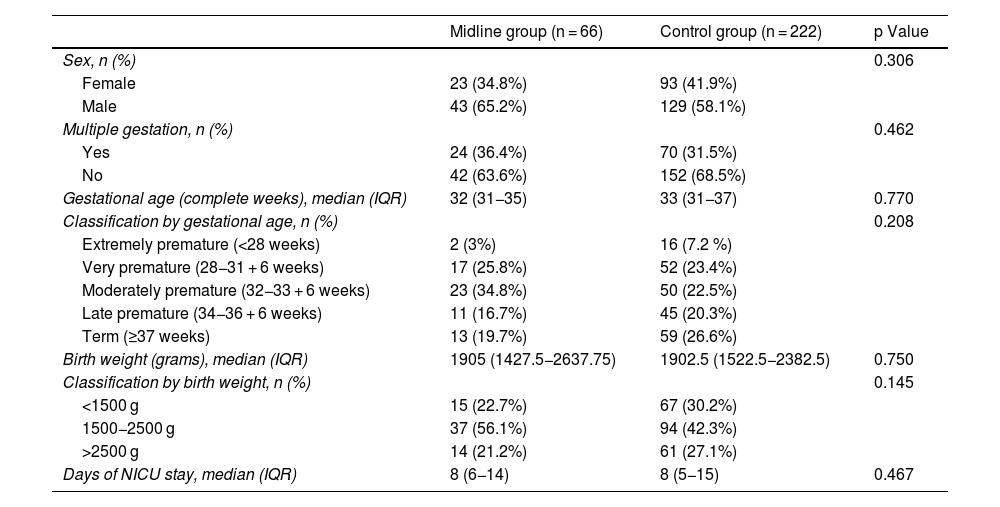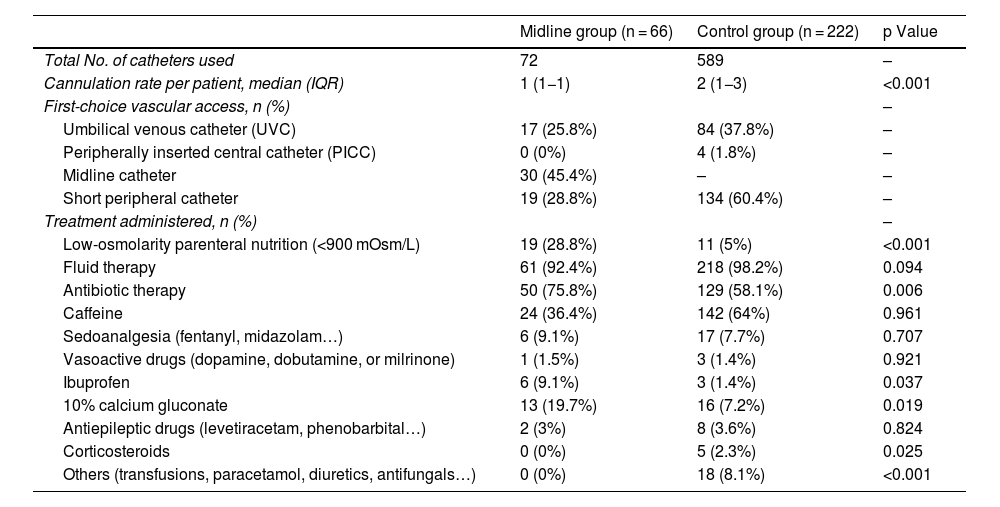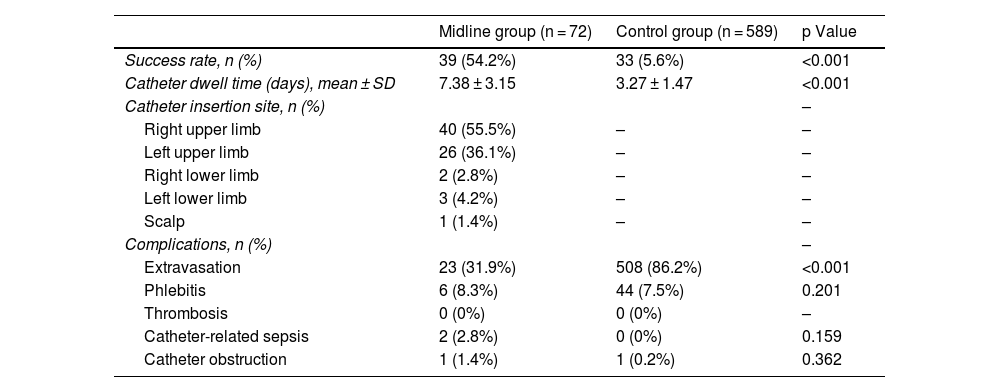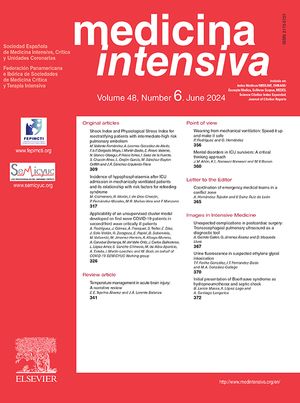Analyze the usefulness of the midline catheter in terms of efficacy and safety for treatments lasting more than 3 days in the neonatal population requiring admission to the NICU.
DesignAnalytical and observational of a prospective cohort (December 2021–November 2023) compared to a historical cohort (January 2020–November 2021).
Setting9-bed Neonatal Intensive Care Unit (NICU, level III hospital.
Patients or participants288, 66 midline group and 222 control group. Inclusion criteria: newborns from 24 to 42 weeks of gestation who required short peripheral or midline cannulation and treatment longer than 3 days.
InterventionsFollow-up during NICU stay and comparison with retrospective data from a historical cohort.
Main variables of interestSociodemographics, success rate (permanence of the same vascular catheter without complications until finish the prescribed treatment), number of catheters, cannulation rate per patient, indwell time, complications.
ResultsThe midline group showed a higher success rate (54.2% vs 5.6%, p < 0.001), a lower number of canalizations per patient (p < 0.001), a longer indwell time (p < 0.001) and a lower number of extravasations (p < 0.001).
ConclusionsThe midline catheter has advantages over short peripheral catheters, being a useful alternative in terms of efficacy and safety for treatments lasting more than 3 days in the neonatal population that requires admission to the NICU.
Analizar la utilidad del catéter midline en términos de eficacia y seguridad para tratamientos con una duración superior a 3 días en la población neonatal que precisa ingreso en UCIN.
DiseñoObservacional analítico de una cohorte prospectiva (diciembre 2021-noviembre 2023) comparada con una cohorte histórica (enero 2020-noviembre 2021).
ÁmbitoUnidad de Cuidados Intensivos Neonatales (UCIN), 9 camas, hospital nivel III.
Pacientes o participantes288, 66 grupo midline y 222 grupo control. Criterios de inclusión: recién nacidos de 24 a 42 semanas de gestación que precisaron canalización de vía periférica corta o de midline y tratamiento superior a 3 días.
IntervencionesSeguimiento durante estancia en UCIN y comparación con datos retrospectivos de cohorte histórica.
Variables de interés principalesSociodemográficas, tasa de éxito terapéutico (permanencia de un mismo catéter vascular en ausencia de complicaciones hasta la completa finalización del tratamiento pautado), número de catéteres, tasa de canalizaciones por paciente, tiempo de permanencia del catéter, complicaciones.
ResultadosEl grupo midline presentó mayor tasa de éxito terapéutico (54.2% vs 5.6%, p < 0.001), menor número de canalizaciones por paciente (p < 0.001), mayor tiempo de permanencia del catéter (p < 0.001) y menor número de extravasaciones (p < 0.001).
ConclusionesEl catéter midline presenta ventajas respecto a los catéteres periféricos cortos, siendo una alternativa útil en términos de eficacia y seguridad para tratamientos con una duración superior a 3 días en la población neonatal que precisa ingreso en UCIN.
Article
Go to the members area of the website of the SEMICYUC (www.semicyuc.org )and click the link to the magazine.








